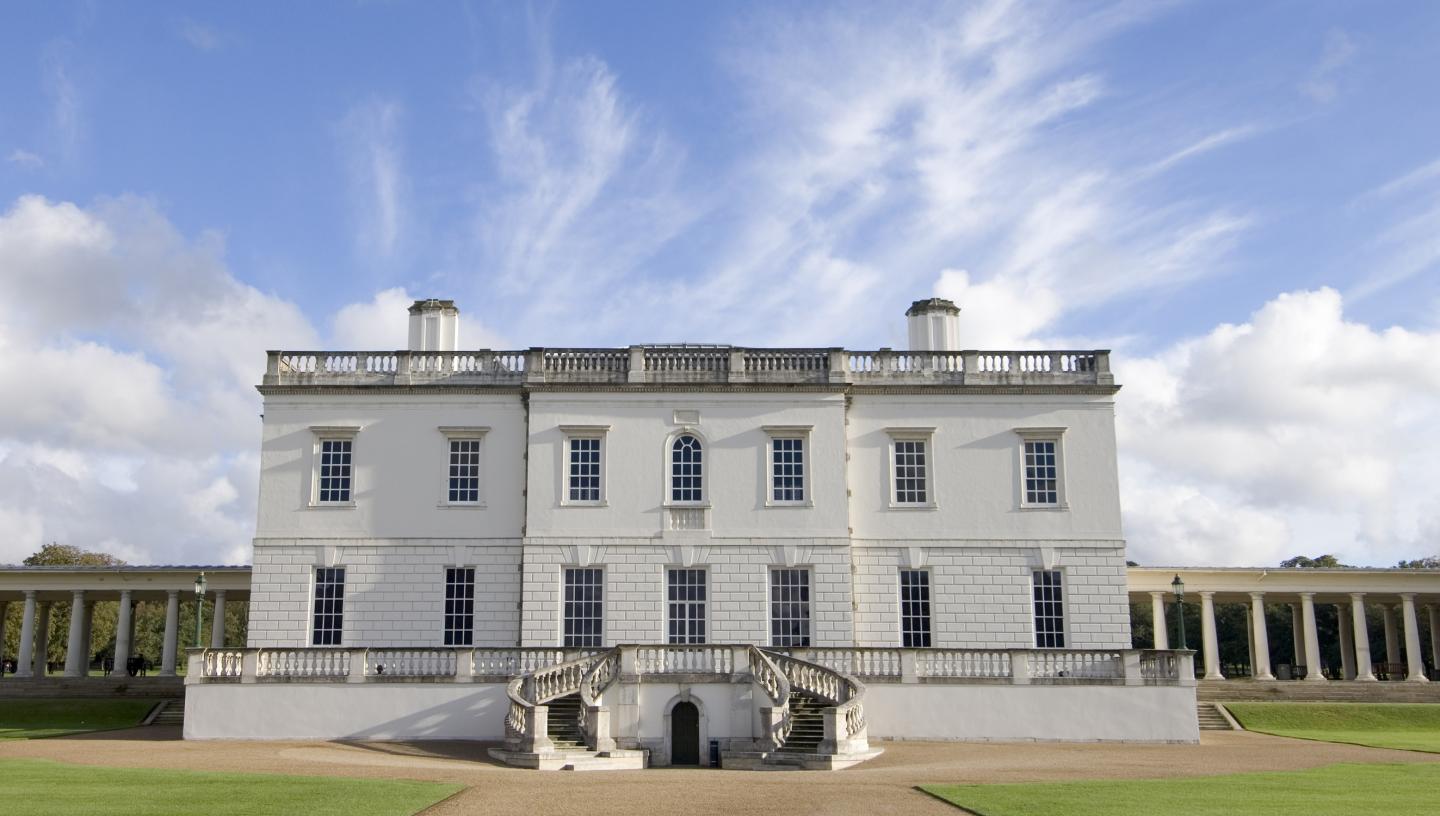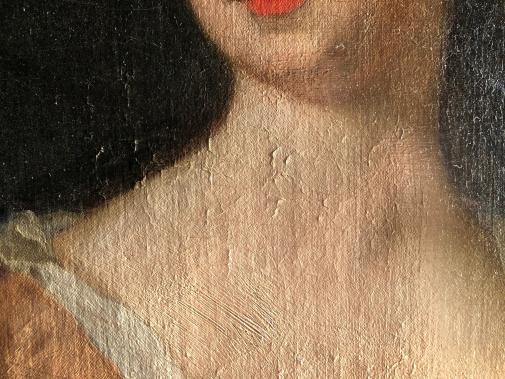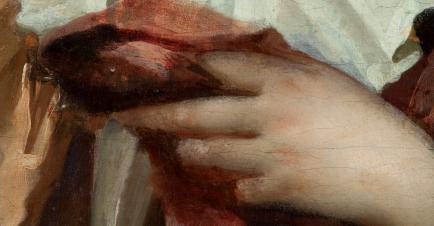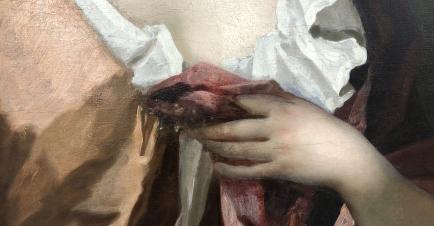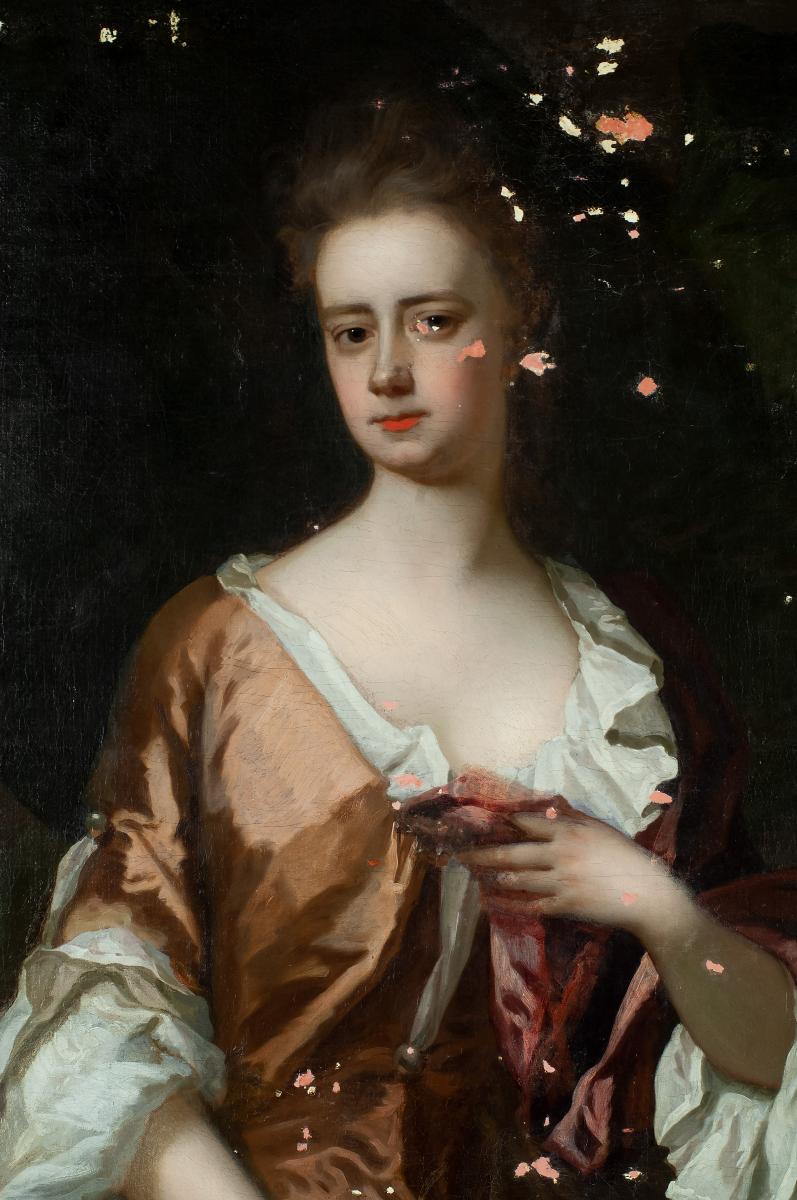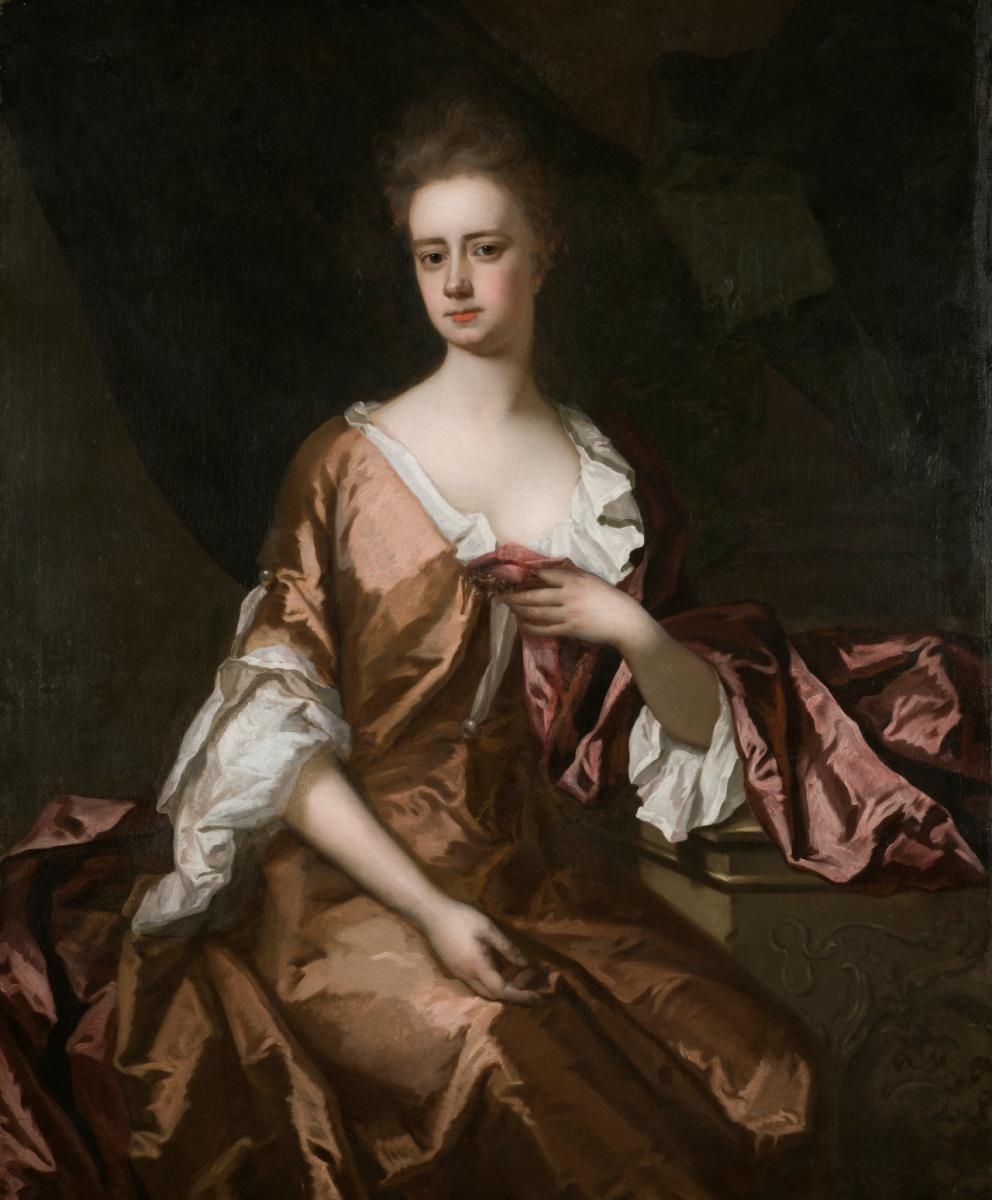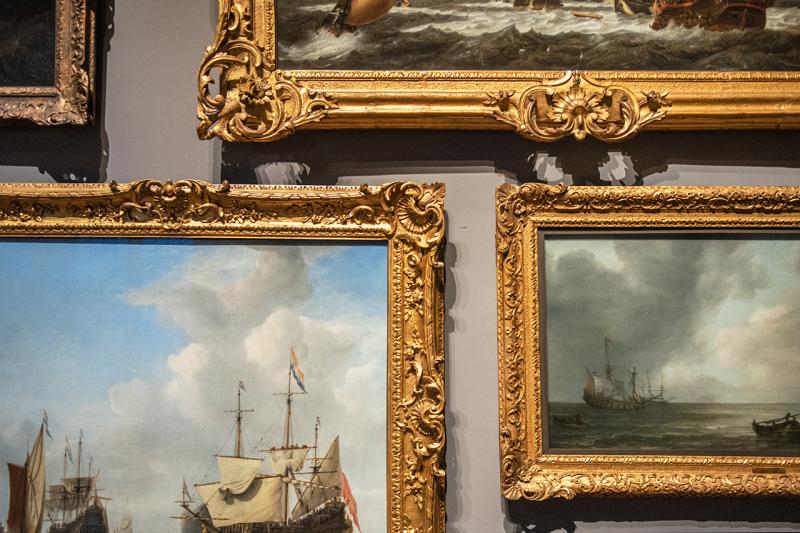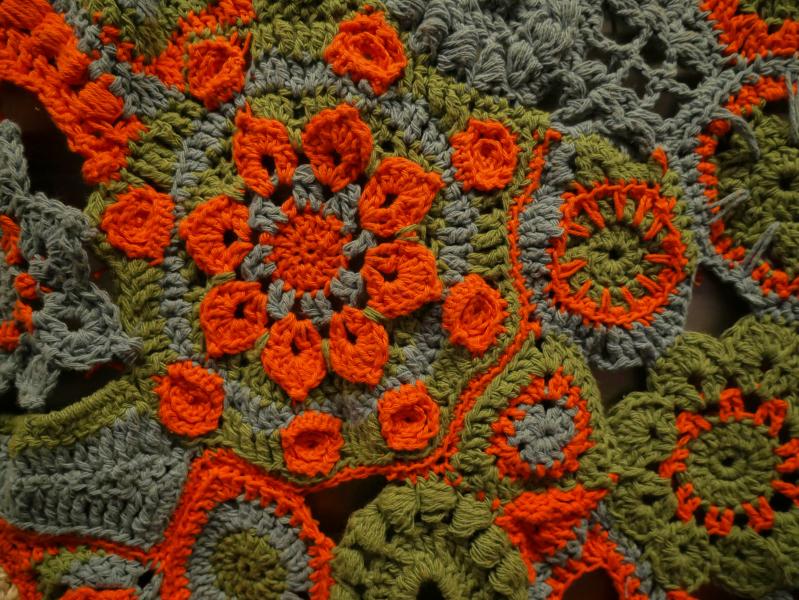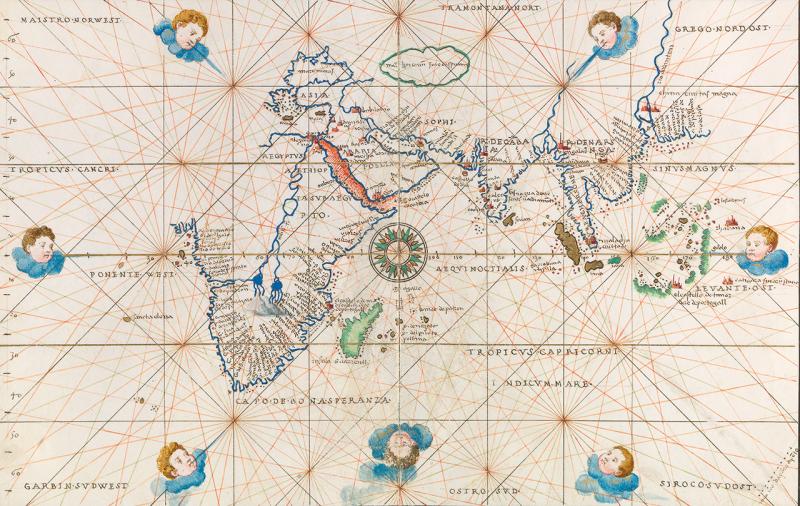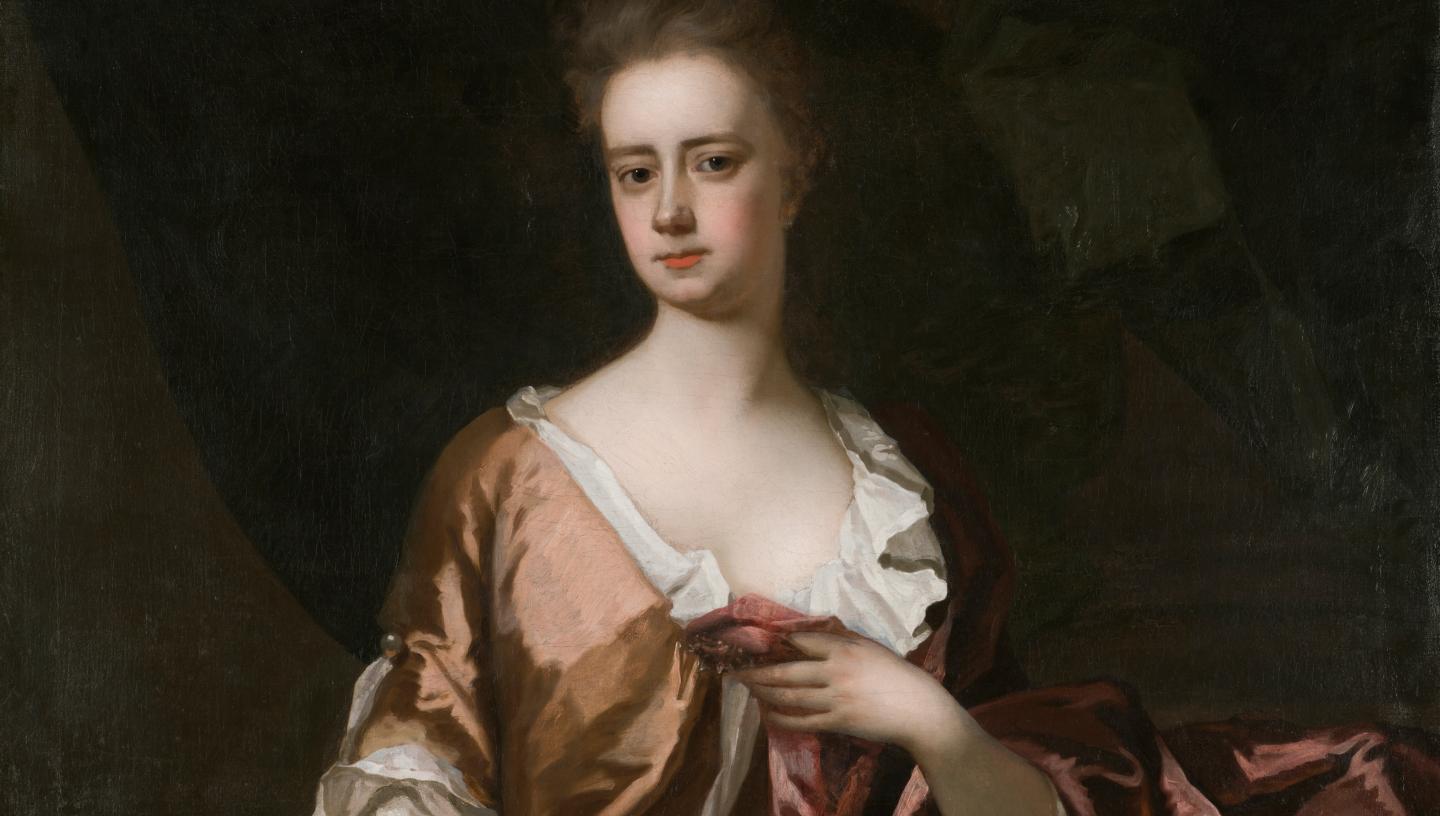
Hanging together in the Queen’s Antechamber of the Queen’s House are the portraits of Commodore William Kerr and his wife Catherine.
Dressed in brown and red garments, the subjects fix the viewer with steady gazes.
While the portrait sitters and the name of the artist, Michael Dahl, may not be well known, the story of these 18th century artworks touches on universal themes of love, loss and reunion.
Following nearly four decades of separation, the couple were reunited once more in 2019 and are now on display together. Katherine Gazzard, Royal Museums Greenwich’s Curator of Art (Post-1800), takes up the story.
Meet the Kerrs
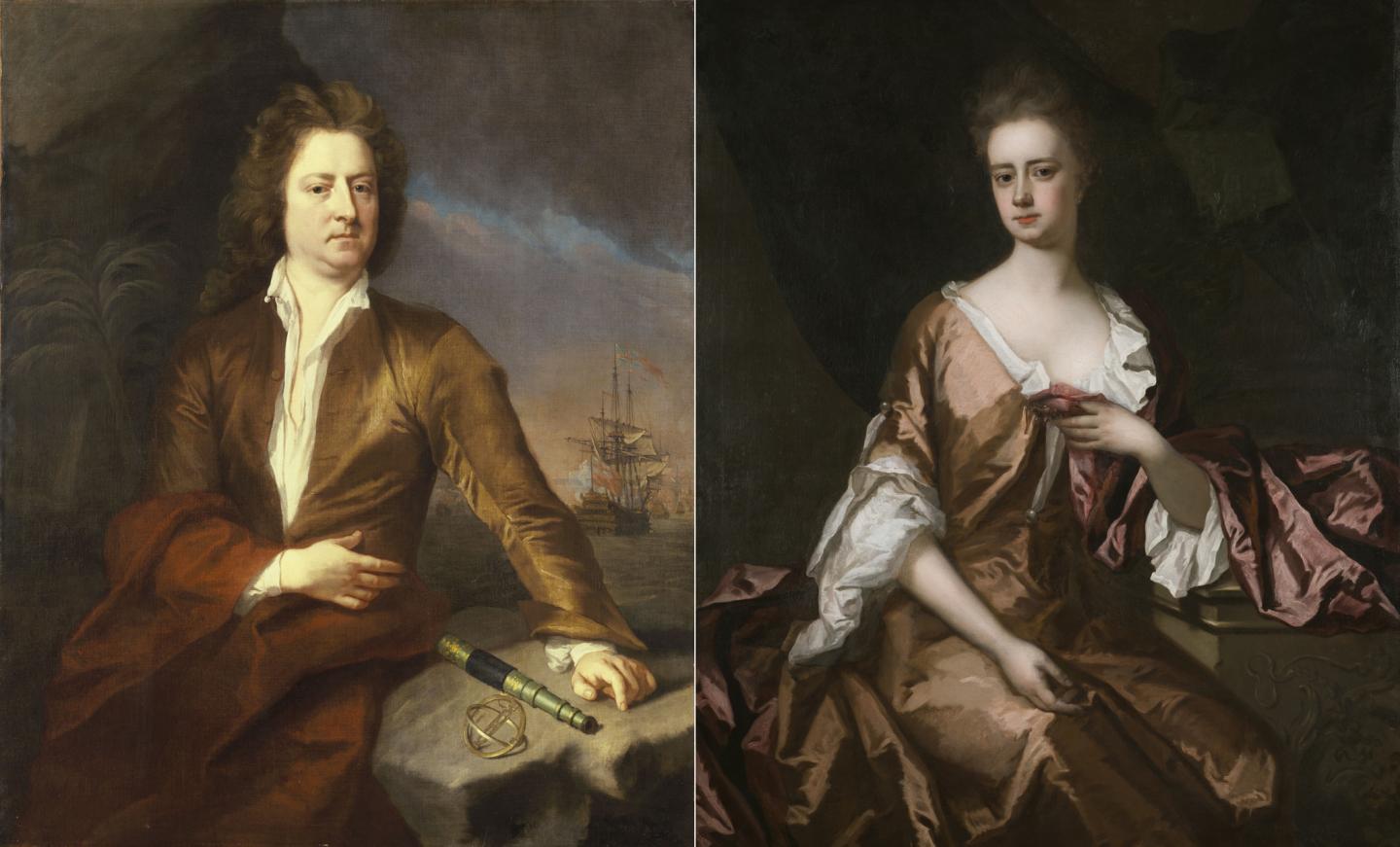
William Kerr and Catherine Dod married in London at Christ Church, Newgate Street, on 5 February 1694. He was a Scottish naval officer, and she was from wealthy landowning family in Shropshire.
Neither of them appears to have been married before, which is surprising given that Catherine was 38 years old at the time of the wedding.
By the standards of the day, this was unusually late in life for a woman to be entering into her first marriage. William’s date of birth is uncertain, but he was probably around a decade younger than his wife.
The Kerrs inherited a fortune when Catherine’s brother was murdered in a pub less than six months after their wedding. They were married for 27 years but had no surviving children. William died on 24 May 1721 and was buried in St Mary Abbotts Church, Kensington.
Catherine lived as a wealthy widow for another 27 years. She died at the impressive age of 92 in 1748.
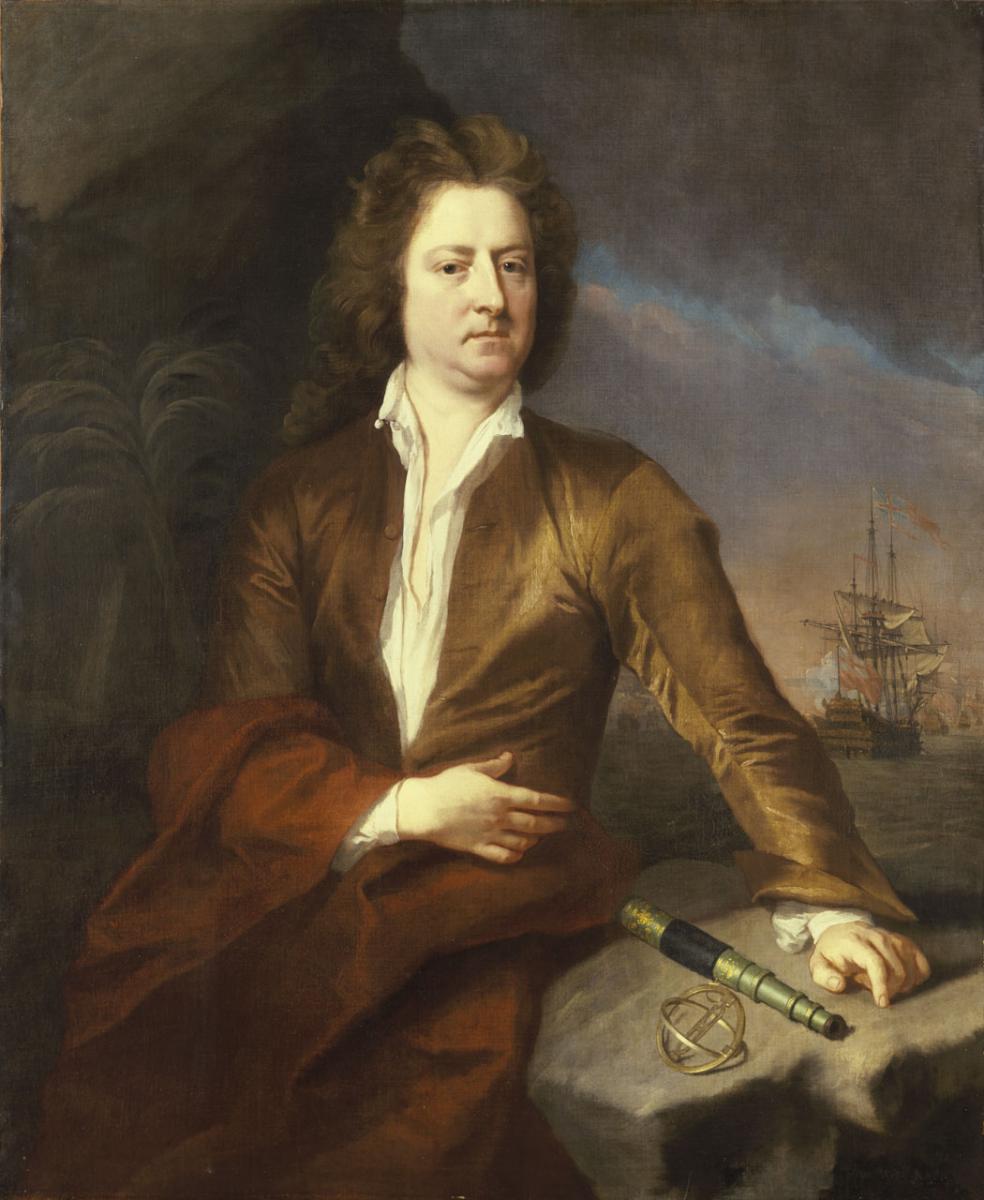
The Kerr portraits up close
Michael Dahl was a court painter for Queen Anne. He painted the portraits of William and Catherine Kerr at some point between 1706 and 1708.
The Rupert, the ship which William commanded in these years, appears in the background of his portrait.
Married couples often commissioned paired portraits in this period. These pairs shared visual harmonies but created distinct identities for husband and wife, reflecting the different social expectations placed on men and women at the time.
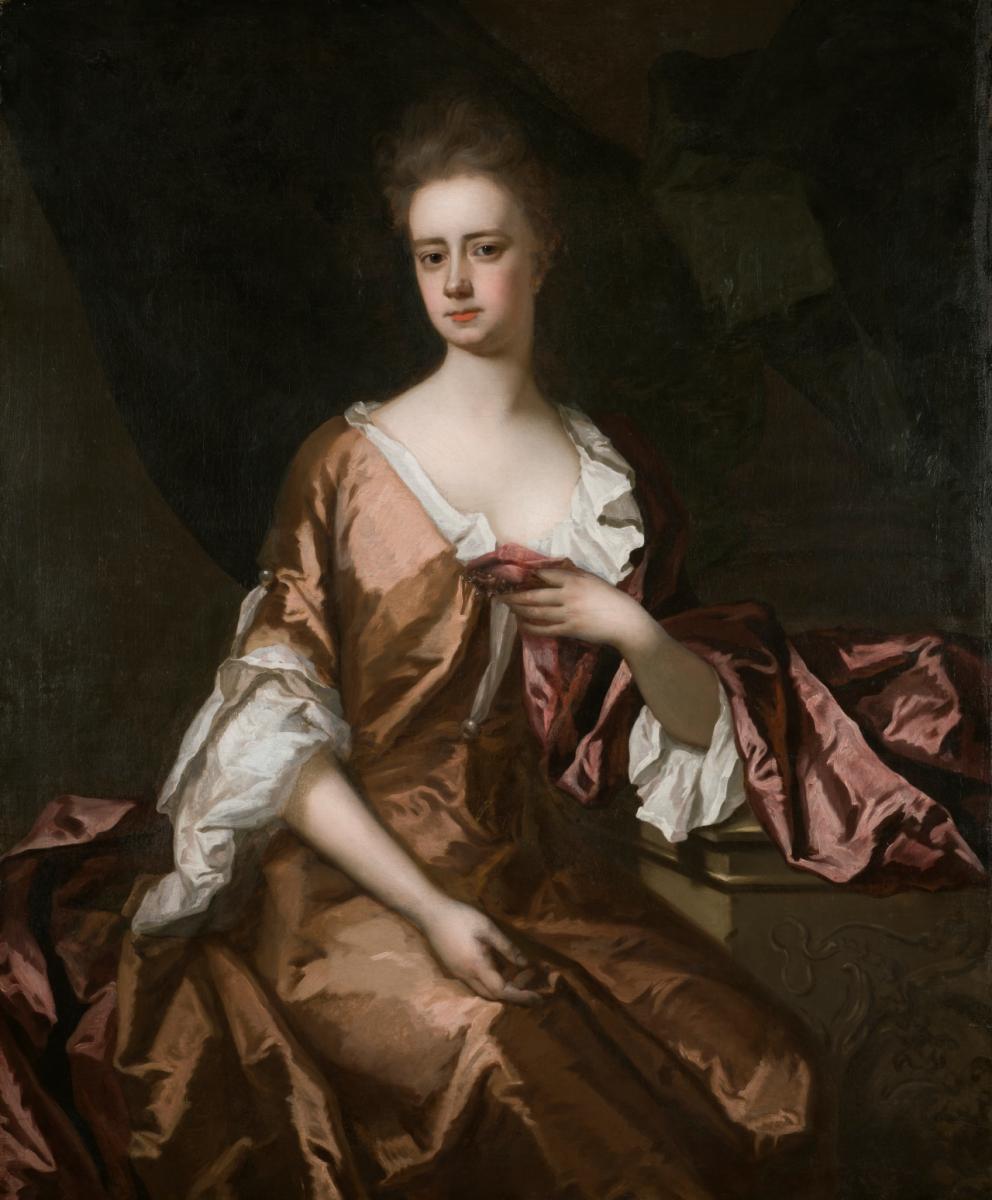
Dahl used colour to create continuity in his portraits of the Kerrs. Both William and Catherine are dressed in brown and red. William is posed on a rocky seashore, alluding to his public role as a naval officer.
Meanwhile, Catherine wears an elegant dress with a low neckline, which associates her with the stereotypically feminine qualities of beauty and refinement.
Why were the paintings separated?
After hanging together for more than 250 years, the two portraits appeared in a country house sale in 1982. At this sale, the National Maritime Museum purchased William’s portrait but did not bid on Catherine’s.
The Museum explained the decision to acquire William’s portrait as follows: “His portrait has special importance as he is seen with a telescope and a ring dial. This portrait could be hung in the Navigation Gallery where it could be seen to link an officer and his instruments.”
The decision to split the paintings exemplifies how men’s stories have historically been privileged at the Museum, while women’s history has been accorded less importance. The Kerrs are not the only married couple whose portraits became separated because the Museum acquired the husband’s painting and not the wife’s.
Reunited once more
Different attitudes now prevail at the National Maritime Museum.
The Museum wants to build a collection that represents people of all genders and is actively looking for opportunities to reunite portraits of married couples in the collection. This allows the paintings to be seen together, as their artists intended.
The purchase of Catherine Kerr’s portrait when it came up for sale in October 2019 was a step towards realising this ambition.
Conservation of the painting was delayed due to the pandemic but, in October 2022, Catherine’s portrait went on display in the Queen’s House, hanging alongside William’s. The Kerrs were finally reunited after 40 years apart.
The search for missing family
The reunion of the Kerrs’ portraits is a cause for celebration, but there are still many paintings in the collection that remain separated from their partners.
This includes a portrait of Catherine Kerr’s brother-in-law Vice-Admiral Sir David Mitchell, who was married to her sister Mary. Portraits of David and Mary Mitchell appeared in the same sale as those of William and Catherine Kerr in 1982. The Museum acquired David’s portrait but not Mary’s.
The Museum remains hopeful that her portrait will one day find its way into the collection to complete the family reunion.
